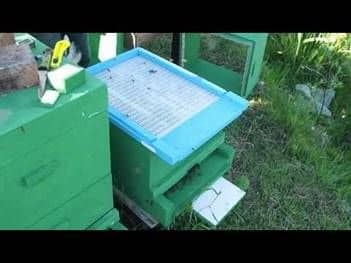Ventilation of pavilion hives

Already at the beginning of work with bees, the need for vertical ventilation in a multi-hull hive in the winter did not cause me doubts, but the degree of its implementation was unclear. In the literature on beekeeping there were the most contradictory opinions on this subject: from the device of a continuous insulated ceiling with a polyethylene film to the use instead of it of a rare burlap and a light warming pillow, good for air and water vapor. It was recommended to equip a complex ventilation system in the hive.
But I started with the ceiling device according to the most common scheme, namely using lobsters and moss warming pillows. I was soon convinced that with vertical ventilation (through the notches in the pallet block) under the conditions of the heated pavilion, the beehive was dried, the bees began to suffer from a lack of moisture, and the honey crystallized.
To reduce the permeability of the ceiling, a sheet of hard fiberboard was placed under the cushion, equal in area to half of the ceiling. However, the drying of the hives was kept in winter.
The normal state of bee families was provided only when moving to a solid ceiling from a solid fiberboard with holes for one or two ventilation tubes with an internal diameter of 20-25 mm located above the non-cellular (in winter) part of the hive.
An attempt to organize the wintering of bees with open lower cuts in the pallet bar and with a ceiling without ventilation holes led to the fact that in the middle of December there was a considerable amount of water in the pan, indicating excessive dampness in the hive. After installing two vent pipes in the ceiling, the dampness in the hive disappeared.
Ventilation tubes (made of plastic or glued from paper) with an internal diameter of 20-25 mm (length depends on the thickness of the thermal cushion) are installed in the ceiling openings for the winter period. To prevent the bees from escaping through the tubes, their upper ends are closed with lids from bottles of household chemicals with 8-10 holes 3.5 mm in diameter or tied with gauze in one layer.
Strong families forming a club on 7-8 cells, two ventilation tubes are needed, and for families whose club occupies up to 5-6 cells, if there are open lower cutouts in the pallet bar, one is enough.
The roof is made in the form of a board made of boards of 15-20 mm with a hole 10-12 mm in diameter, arranged so that through it a feed can be filled with a funnel without disturbing the bees. If holes in the ceiling and roof are not used, they are closed with pieces of plywood or cork.
Ventilation of pavilion hives
